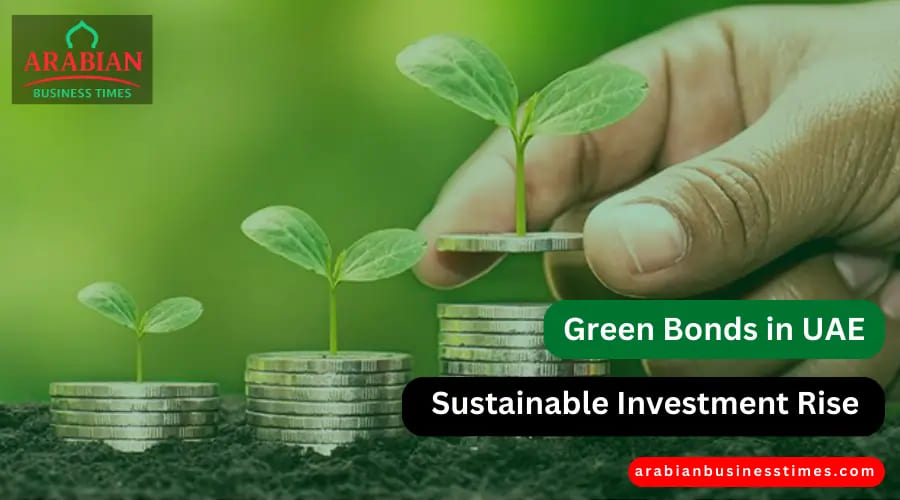In recent years, the United Arab Emirates (UAE) has positioned itself as a leader in sustainable finance, attracting global attention for its ambitious climate goals. With the country pledging to achieve Net Zero by 2050, it has introduced innovative financial instruments to fund clean energy and eco-friendly projects. One of the most significant developments in this space is the rise of green bonds.
Green bonds are no longer a niche concept; they are becoming mainstream tools for financing a greener economy. For investors, they offer a dual advantage—financial returns along with a positive environmental impact. The UAE’s strong policy framework, global partnerships, and regional leadership make it one of the most attractive markets for sustainable investments in the Middle East.
This article explores what green bonds are, how they are growing in the UAE, and the immense investment opportunities they present for a sustainable future.
What Are Green Bonds?
At their core, green bonds are fixed-income securities issued to raise capital for projects that generate environmental benefits. Unlike traditional bonds, the money raised through green bonds is directed exclusively toward sustainability-focused projects.
Typical areas funded by green bonds include:
- Renewable energy projects like solar farms and wind power.
- Energy-efficient buildings designed to reduce carbon emissions.
- Smart infrastructure, including sustainable transport systems.
- Clean water and waste management initiatives.
Globally, green bonds have seen exponential growth. According to the Climate Bonds Initiative, the issuance of green bonds exceeded $500 billion in 2021, highlighting the worldwide appetite for eco-friendly investments. The UAE, with its progressive climate agenda, is now at the forefront of adopting this trend in the Middle East.
Growth of Green Bonds in UAE
The UAE has taken several bold steps to boost the green bond market and align finance with sustainability. Some key highlights include:
- Net Zero by 2050 Strategy—The UAE became the first Middle Eastern nation to commit to net-zero emissions, which requires significant funding through green finance.
- Sovereign Green Bonds—The government has issued bonds to finance projects such as solar energy expansion, hydrogen development, and sustainable infrastructure.
- Dubai Sustainable Finance Working Group – This initiative promotes Environmental, Social, and Governance (ESG) principles in financial markets, encouraging wider adoption of green bonds.
These actions have helped the UAE build credibility as a global player in sustainable finance. International investors are increasingly attracted to the region, viewing the UAE as a gateway for green investment in the Middle East.
Key Drivers Behind the Rise
Several factors explain why green bonds are rising so quickly in the UAE:
- Strong Government Support – Clear policy frameworks and strategic plans make the UAE a safe destination for sustainable investments.
- Growing Investor Awareness—Investors are actively seeking assets that align with ESG goals, and green bonds perfectly meet this demand.
- Global Pressure for Sustainability – With climate change becoming a central concern, financial institutions worldwide are shifting toward greener portfolios.
- Regional Leadership—Hosting events like COP28 has cemented the UAE’s reputation as a sustainability leader in the Middle East.
Together, these drivers ensure that the UAE’s green bond market continues to expand rapidly.
Opportunities for Sustainable Investment in the UAE
Green bonds in the UAE open doors to multiple sectors with high potential for sustainable growth. Some of the most promising opportunities include:
- Renewable Energy: With mega projects like the Mohammed bin Rashid Al Maktoum Solar Park, the UAE is investing billions in renewable power generation. Green bonds are vital in financing these initiatives.
- Smart Cities: Projects such as Masdar City represent the UAE’s vision for urban sustainability, focusing on energy efficiency and reduced carbon footprints.
- Transportation: The country is developing low-carbon public transport systems and electric mobility infrastructure, both supported by green financing.
- Water and Waste Management: Advanced desalination plants and recycling projects are also receiving green bond funding.
For investors, these opportunities combine stable returns with long-term value creation, making the UAE one of the best places for sustainable investment.
Challenges & Risks
Despite the rapid growth, the green bond market in the UAE faces certain challenges:
- Limited Awareness: Many local investors still lack a clear understanding of green finance.
- Greenwashing Concerns: There is always a risk that some projects may be labeled “green” without genuinely delivering environmental benefits.
- Regulatory Framework: While the UAE is moving fast, more standardized rules and transparency are needed to strengthen investor confidence.
Addressing these challenges will be crucial to ensuring the credibility and scalability of the market.
Future Outlook of Green Bonds in UAE
Looking ahead, the outlook for green bonds in the UAE is extremely positive.
- By 2030, experts predict that green bonds will become a mainstream financing tool across all sectors of the UAE economy.
- The UAE is expected to evolve into a regional hub for sustainable finance, attracting investments not just locally but also from Europe, Asia, and North America.
- Global alignment with ESG standards will further boost investor trust and create a stronger market foundation.
With its vision, infrastructure, and government backing, the UAE is on track to lead the sustainable investment revolution in the region.
Conclusion
The rise of green bonds in the UAE is more than just a financial trend—it is a reflection of the country’s determination to build a sustainable future. By linking finance with environmental goals, the UAE has created profitable investment opportunities that also address global climate challenges.
For investors, green bonds in the UAE present a unique chance to earn stable returns while contributing to positive change. As the country continues its journey toward becoming a green finance hub, the role of sustainable investments will only grow stronger.
👉 Stay tuned with Arabian Business Times for in-depth updates on sustainable investment trends shaping the future of the UAE.
Frequently Asked Questions (FAQ)
Q1. What are Green Bonds in simple terms?
Green Bonds are financial instruments used to fund eco-friendly projects such as renewable energy, clean transport, and sustainable infrastructure.
Q2. Why are green bonds important in the UAE?
They help finance the UAE’s Net Zero 2050 targets and attract both domestic and international investors to sustainable projects.
Q3. What are the risks of investing in Green Bonds?
The main risks include limited awareness, lack of standardization, and greenwashing by companies mislabeling projects.
Q4. Which sectors in the UAE benefit most from Green Bonds?
Renewable energy, smart cities, transportation, and water management are the key sectors.
Q5. Are Green Bonds profitable for investors?
Yes, they offer competitive returns while supporting sustainable development and aligning with ESG principles.

